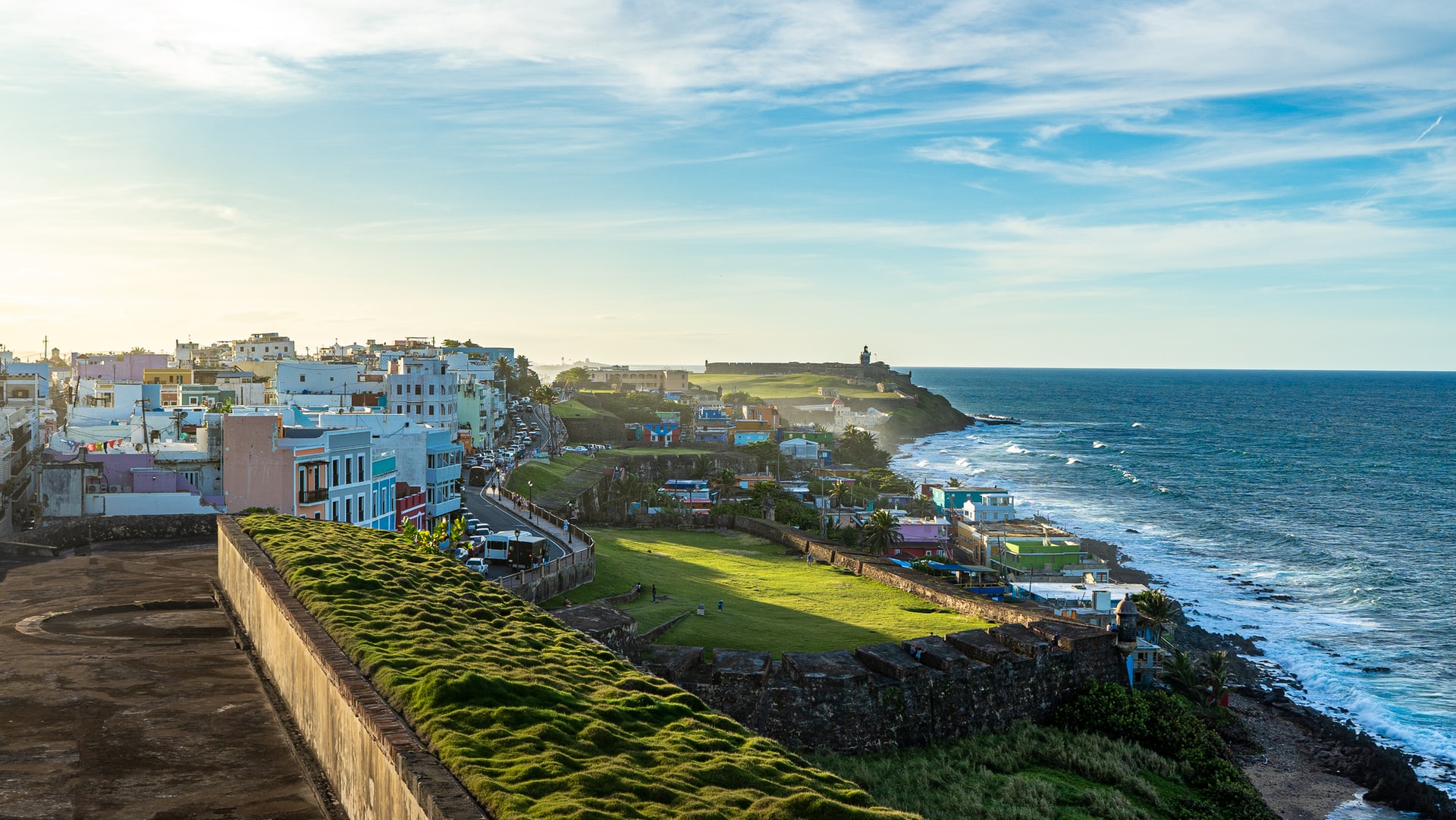by Brahidaliz Martinez

October 2018. I called the University of Puerto Rico’s library to ask about the coquí’s curse. In my mangled Spanish, I requested someone who could speak English. The front desk paused before putting me on hold without a response. My stomach churned as I waited through the silence. I wanted to hang up, continue with my project without any new research, but then a new voice spoke in unaccented English.
“I’d like to know if you have recorded Taíno oral stories about the coquí in your archives. I’m looking for the story about the coquí’s curse,” I stuttered. “The origin myth of how the coquí got its singing voice.”
I took a breath, then another. The person on the other end huffed before saying, “What? What myth? We don’t have that kind of stuff here.”
Shaken, I hung up.
That year, I was starting my project for a grad school course: a diasporic adaptation of the origin of the coquí’s singing voice. In this story, coquí visits Yucahu, the cemi (Taíno deity) of the earth, and requests that the island stop its silence. Yucahu grants the tree frog’s wish, but at a cost — if the coquí leaves, it will die. This is true in real life. The coquí, Puerto Rico’s national symbol, can’t survive outside of tropical weather. For me, the coquí represents an afroindigenous identity that survived on the island but became forgotten elsewhere.
Taíno oral lore encompasses histories that trace back to pre-Columbian times. When West African slaves fled to the rainforest and settled in the mountains with their Taíno companions, their stories mingled and flourished, resulting in countless lore about the hupias, obeah, cemis, the coquí, and more. However, colonialism, along with Puerto Rico’s industrial movement in the late 1930s, had erased many, perhaps hundreds, of these stories. Only a few were recorded. Children’s book adaptations use Spanish and West African folklore, including the chupacabra, which apparently is incorrect. Even the stories that my afroindigenous relatives had told me don’t contain traces of Spaniard folklore.
Because of this erasure, academic research about Taínos and Jibaros is scarce. The documents available whitewashed the Jibaro population in the island’s central region. History textbooks still retain the myth of Taíno extinction. Taínos today mostly reside among the mountains and communicate with their families through the internet and mobile phones. And yet people insist on the impossibility of Indigenous survival, that the Spaniards exterminated the Taínos. I continuously scavenged through academic archives and asked fellow Boricuas on social media for information about the oral lore of my Afro-Jíbaro ancestors not readily accessible in institutions. Linguistic anthropologist Sherina Feliciano-Santos has written scholarly articles about Borican Taínos today, although I wouldn’t find out about her until this year.
So, when I discovered Sherina Feliciano-Santos’ book, the excitement and relief overwhelmed me. Finally, a source that doesn’t relegate the Taínos to the past. A source that amplifies the voices and activism of elders living in Puerto Rico. She begins her book with an account of her paternal great-grandmother described as india for her long black hair. Feliciano-Santos’ experiences with microagressions and dissecting her cultural and racial identity leads her to wonder what being Puerto Rican means to her. While searching through the written archives, she realized the gaps in her family’s histories. Her maternal grandmother, Abuela Adela, held knowledge from previous generations, but Feliciano-Santos hadn’t thought to ask. Feliciano-Santos reflected on this, questioning the impact on her sense of self if Abuela Adela had passed those oral histories onto her:
These reflections about my own family, about the stories I heard again and again and the stories I would never hear, have guided my scholarly pursuits. How do the stories told by families whose histories and trajectories are not recoverable through archives and documents—whose pasts, simultaneously memorialized and overlooked, are not reflected in the broader and more widespread histories of the island—impact how Puerto Rican people understand who they are?
My cousin, Cookie, told me stories about the coquí and the cemis. When I was six and about to move to the States with my parents and younger brother, she retold the story of the coquí’s curse. As I began to lose my Spanish after moving, I also forgot about the story. When Hurricane Maria swept through Puerto Rico in September 2017, she disappeared. At that time, I was in grad school and determined to reclaim my heritage. I lost a part of me when my relatives shared the news. Once again, I was disconnected from my cultural identity.
Feliciano-Santos unpacks what it means to reclaim Taínoness. She includes interviews with elders on the Island and Taíno activists there and in the States. Her work explores the perspectives of various groups and organizations like the Liga Guakia Taina-ke (now called Naguake) and the General Council of Taíno, highlighting issues like gatekeeping and antiblackness. She applies her linguistic knowledge to the evolution and reconstruction of the Taíno language. The chapters on historical erasure and colonial violence particularly provide insight into the fight for Taíno survival and recognition.
Most Puerto Ricans, from the island and the diaspora, believe that the Taíno died off long ago; they reinforce the triracial heritage of every boricua. Everyone on the island is Spanish, African, and Indian. However, this is a myth constantly recycled in schools and scholarly sources. Articles about the jibaros whitewash the afroindigenous population in central Puerto Rico. Some of the Taínos today who retain the memory of our history and folklore refuse to pass on their oral archive. Centuries of erasure and exploitation spurred doubt.
The Taíno/Boricua activists I worked with were suspicious of written histories. Their skepticism stemmed from several convictions: that mainstream historians had no knowledge of the existence of an Indigenous population, that they might have knowledge of Indigenous populations but also have a vested interest in not including Indigenous voices in their narratives, and that Taíno/Boricua voices may have been excluded because they had not yet organized or articulated themselves as Indigenous.
Without a complete oral history, how can the Boricans disconnected from their indigeneity reconstruct themselves? Most Taínos in and out of tribal organizations offer various but conflicting definitions of Taínoness. I’d especially struggled with this for the past several years. When I found out about my maternal great aunts – Afro-Taíno women residing in the island’s mountainous region – I confessed this. Having been shunned by my relatives for not converting to Catholicism, the two encouraged me to think otherwise. There’s never one way to be Taíno, they insisted.
Abuela Shashiro, a Taíno elder and one of Feliciano-Santos’ interviewees shares the same sentiment:
The first time I introduced my research on Taíno language and cultural survival to Abuela Shashira, elder and leader of the General Council of Taíno (CGT), she explained her belief that talking Taíno is grounded within the spirit of the Taíno people—that it is about feeling and knowing Taínoness, not about a particular code. Abuela was dedicated to socializing me into what she understood as the correct ways of speaking as a Taíno. Instead of answering my initial questions about Taíno language restoration, she showed me how to prepare a traditional Taíno dish and say a prayer. She told me that being or becoming indio was a matter of doing, not saying.
Like the coquí’s curse, my language and cultural identity perished after moving to the States. What I could gather over the past several years were fragments and eroded histories of my ancestors. When I think about reclaiming Taínoness, I think of the coquí. It stops singing and living outside its island habitat, but its spirit lives on. The tree frog’s spirit persists inside me, urging me to reconstruct myself.
Brahidaliz Martinez is a contributor (webcomic reviewer) to The Geekiary. Their cross-genre chapbook, Coquí Song, is forthcoming (2023) from Mason Jar Press.



Add your first comment to this post